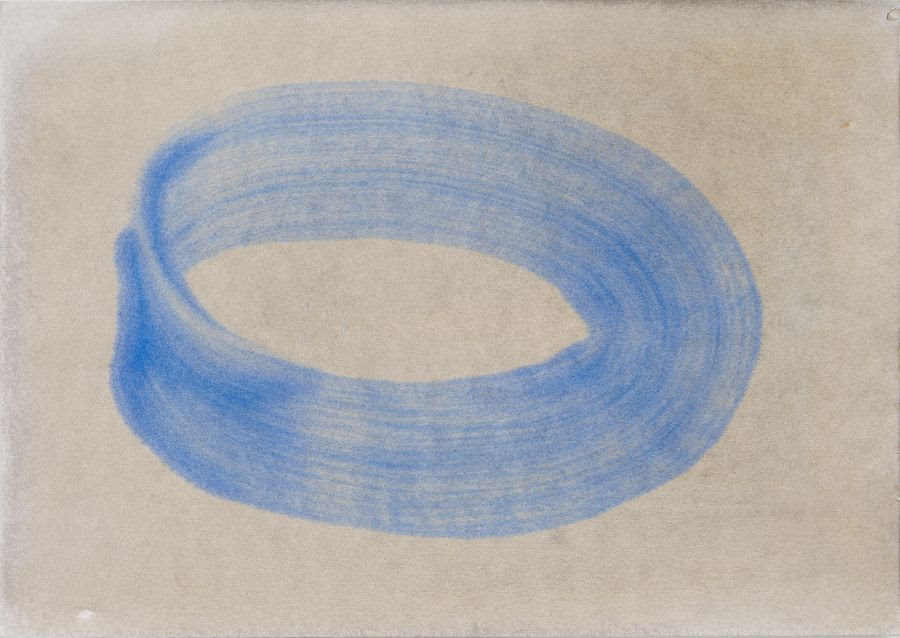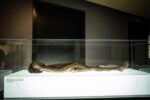Markus Raetz

In mostra opere inedite dagli anni Novanta ad oggi, di cui alcune riscoperte durante la realizzazione del catalogo ragionato dell’artista e ultimate solo di recente.
Comunicato stampa
We are pleased to announce a solo exhibition by Markus Raetz at our gallery in Zuoz.
The show features original works from the 1990s to the present, including pieces that have surfaced during work on the catalogue raisonné, some of which were left unfinished and have only recently been completed. We will also be showing preparatory models made as starting points for sculptures and public works, such as the large OUI / NO at Place du Rhône in Geneva.
Markus Raetz, born in Bern in 1941, reflects on the language of art as visual perception with essential, poetic images. The mechanisms of representation and the plurality of vision are the themes around which his research has developed. The artist outlined the foundations of his vision in notebooks in the 1960s and 1970s: lines form figures, landscapes and objects whose continuous transformation draws us into the creative process, conscious of the fluidity of images and viewpoints.
Over the years the ideas and themes developed in the drawings have been transformed into works, become installations, sculptures, monumental projects. Often made with natural, unconventional or ephemeral materials, they conserve the lightness of the drawing and the awareness of being images, and thus representation, play, thought. Examples include the eucalyptus leaves that form faces on walls (1982); the branches that when seen from a given vantage point shape the torso of Eve (1983); the granite steles scattered on a meadow, which seen from a nearby hill resemble a face (1984).
Since the early 1990s Raetz has worked on a new cycle of sculptures, the Anamorphoses: works that take on a different appearance depending on the selected vantage point. The movement of the viewer around the work makes it possible to find the position from which an apparently formless mass suddenly becomes the representation of a familiar object like a head, a pipe, the silhouette of Mickey Mouse. In other cases the sculpture itself is mobile, and continuously transforms itself before our eyes. Shapes change their appearance and their meaning: a word can be shifted into its exact opposite, a glass can become a bottle.
In Raetz’s works opposites coexist and nothing is as it appears at first glance. The complexity of the reality that surrounds us is revealed through a simultaneously playful and conceptual analysis of images, bodies and words.
In the exhibition we will see geometric forms floating in space, objects and words mutating, the infinite Möbius strip, metal wire silhouettes that seem to turn as we observe them, and more.
Markus Raetz lives and works in Bern. From 1966 to the present he has exhibited in several galleries and museums, including Kunsthaus Zürich (1975), Stedelijk Museum in Amsterdam (1979), the New Museum in New York (1988), the Serpentine Gallery in London (1993), the Museum der Moderne of Salzburg (2006), and more recently at the Bibliothèque Nationale in Paris and MAMCO Geneva in 2011. In 2012-2013 Kunstmuseum Basel presented a major retrospective of his drawings, and in 2016 the MASI of Lugano presented a solo exhibition of over 150 of his works. The artist has represented Switzerland at the Venice Biennale in 1988, and has taken part in Documenta, Kassel in 1968, 1972 and 1982. His works are in the collections of MoMA New York, Tate Gallery in London, Centre Pompidou in Paris, the Museum of Modern Art of Frankfurt, and major Swiss museums.
*
Wir freuen uns, eine Einzelausstellung von Markus Raetz in der Galerie in Zuoz ankündigen zu können. Wir werden noch nie gezeigte Arbeiten von den 1990er Jahren bis heute präsentieren, die zum Teil erst kürzlich vollendet wurden, sowie Modelle für Skulpturen im öffentlichen Raum, wie zum Beispiel für das grosse OUI / NO, das sich auf der Place du Rhône in Genf befindet.
Markus Raetz, 1941 in Bern geboren, reflektiert die Realität in essenziellen und poetischen Bildern. Die Mechanismen der Darstellung und die Pluralität der Sichtweisen sind die Themen, um die sein künstlerisches Werk kreist. In seinen Notizbüchern aus den 1960er und 1970er Jahren legte er die Grundlagen seiner Vision an: Linien formen Figuren, Landschaften und Objekte, deren beständige Verwandlung uns am kreativen Prozess teilhaben lässt und die uns die Fluidität der Bilder und Blickwinkel bewusst macht.
Im Verlauf der Jahre werden die in den Zeichnungen entwickelten Ideen in Installationen, Skulpturen und monumentalen Werken umgesetzt. Diese wurden oft aus natürlichen und vergänglichen Materialien geschaffen, so dass sie trotz ihrer Plastizität die Leichtigkeit einer Zeichnung verkörpern: z.B. die Eukalyptusblätter, die wie Pinselstriche Gesichter formen; die Zweige, die eine Büste von Eva ahnen lassen; oder die auf einer Wiese ausgelegten Granitstelen, die von einem kleinen Hügel aus gesehen ein Gesicht formen.
Seit Beginn der 1990er Jahre arbeitet Raetz an einem neuen Skulpturenzyklus, den Anamorphosen. Je nach dem gewählten Blickwinkel sehen diese unterschiedlich aus Wenn wir uns bewegen, erkennen wir, wie eine unförmige Masse plötzlich zur Darstellung eines vertrauten Gegenstands wird, zum Beispiel eines Kopfs, einer Pfeife, eines Umrisses von Micky Maus. In anderen Fällen ist die Skulptur selbst mobil und verwandelt sich vor unseren Augen. Die Formen ändern Aussehen und Bedeutung; ein Wort kann sich in sein Gegenteil verwandeln, ein Glas zur Flasche werden. In Raetzs Werken koexistieren die Gegensätze, und nichts ist, wie es auf den ersten Blick scheint. Die Komplexität der Wirklichkeit wird durch eine ebenso verspielte wie konzeptuelle Analyse von Erscheinungsformen und Materialien erfahrbar gemacht.
In der Ausstellung werden wir Formen und Linien sehen, die im Raum schweben und tanzen; Gegenstände und Wörter, die sich verwandeln; das geheimnisvolle Möbiusband, das sich endlos windet; Profile aus Draht, die sich zu drehen scheinen, wenn wir uns bewegen – und anderes mehr.
Markus Raetz lebt und arbeitet in Bern. Von 1966 bis heute hat er in zahlreichen Galerien und Museen ausgestellt, unter anderem im Kunsthaus Zürich (1975), im Stedelijk Museum Amsterdam (1979), im New Museum in New York (1988), in der Serpentine Gallery in London (1993), im Museum der Moderne in Salzburg (2006) und in neuerer Zeit in der Bibliothèque Nationale Paris und im MAMCO in Genf im Jahr 2011. 2012 – 2013 präsentierte das Kunstmuseum Basel eine grosse Retrospektive seiner Zeichnungen, und 2016 widmete ihm das MASI in Lugano eine Einzelausstellung mit über 150 Arbeiten. 1988 vertrat der Künstler die Schweiz an der Biennale in Venedig; und 1968, 1972 und 1982 nahm er an der documenta in Kassel teil. Seine Werke befinden sich in den Sammlungen des MoMa in New York, der Tate Gallery in London, des Centre Pompidou in Paris, des Museums für Moderne Kunst in Frankfurt sowie in den wichtigsten Museen der Schweiz.
*
Siamo felici di annunciare la mostra personale di Markus Raetz presso la galleria di Zuoz. Presenteremo opere inedite dagli anni Novanta ad oggi, di cui alcune riscoperte durante la realizzazione del catalogo ragionato dell’artista e ultimate solo di recente. Mostreremo inoltre i modelli preparatori di sculture e progetti per spazi pubblici, come per esempio per il grande OUI / NO di Place du Rhône a Ginevra.
Markus Raetz, nato a Berna nel 1941, riflette sul linguaggio dell’arte in quanto percezione visiva con immagini essenziali e poetiche. I meccanismi della rappresentazione e la pluralità della visione sono i temi attorno ai quali si snoda il suo percorso artistico. Nei taccuini degli anni Sessanta e Settanta l’artista traccia le basi della sua visione: le linee formano figure, paesaggi e oggetti, la cui continua trasformazione ci rende partecipi del processo creativo e consapevoli della fluidità delle immagini e dei punti di vista.
Nel corso degli anni, le idee e le tematiche sviluppate nei disegni vengono trasformate in installazioni, sculture, opere monumentali. Realizzate spesso con materiali naturali, inconsueti o effimeri, conservano la leggerezza di un disegno pur nella loro plasticità.
Ne sono esempi i lavori degli anni Ottanta in cui poche foglie di eucalipto riproducono dei volti sulle pareti; alcuni rametti delineano un busto di Eva; le stele di granito sparse su un prato, viste da una vicina collina, raffigurano un volto nella scultura Der Kopf nel Marian Park di Basilea (1984).
Dall’inizio degli anni Novanta Raetz lavora ad un nuovo ciclo di sculture, le Anamorfosi: opere che appaiono diverse a seconda del punto di vista scelto. Il movimento dello spettatore intorno all’opera permette di individuare la posizione dalla quale un’apparente massa informe diventa improvvisamente la rappresentazione di un oggetto familiare come una testa, una pipa, la sagoma di Topolino. In altri casi la scultura stessa è mobile e si trasforma continuamente davanti ai nostri occhi. Le forme mutano aspetto e significato: una parola può trasformarsi nel suo esatto contrario, un bicchiere può diventare bottiglia. Nelle opere di Raetz gli opposti coesistono e niente è come appare al primo sguardo. La complessità della realtà che ci circonda si rivela attraverso un’analisi al contempo ludica e concettuale di fisionomie, corpi e parole.
In mostra vedremo forme geometriche che fluttuano nello spazio, oggetti e parole che si trasformano, il nastro infinito di Möbius, sagome in filo di ferro che sembrano girarsi mentre le guardiamo, e altro ancora.
Markus Raetz vive e lavora a Berna. Dal 1966 ad oggi ha esposto in numerose gallerie e musei, tra cui il Kunsthaus di Zurigo (1975), lo Stedelijk Museum di Amsterdam (1979), il New Museum di New York (1988), la Serpentine Gallery di Londra (1993), il Museum der Moderne di Salisburgo (2006) e più recentemente alla Bibliothèque Nationale di Parigi e al MAMCO di Ginevra nel 2011. Nel 2012 - 2013 il Kunstmuseum Basel ha presentato una grande retrospettiva di suoi disegni e nel 2016 il MASI di Lugano gli ha dedicato una mostra monografica di oltre 150 opere. L’artista ha rappresentato la Svizzera alla Biennale di Venezia nel 1988 e ha partecipato a Documenta, Kassel nel 1968, nel 1972 e nel 1982. Le sue opere fanno parte delle collezioni del MoMa di New York, della Tate Gallery di Londra, del Centre Pompidou di Parigi, del Museo d’Arte Moderna di Francoforte e dei maggiori musei svizzeri.



